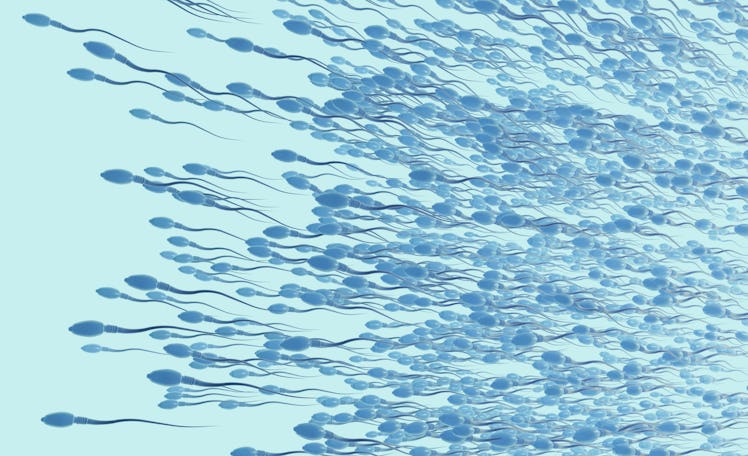What Happens To The Sperm After A Vasectomy?
Don’t worry, your balls won’t burst. But they may feel sore.

One hundred million — that’s how many sperm cells, on average, swim around in one milliliter of semen. To replenish that supply, the testicles produce roughly 1,500 new sperm each day. But after a vasectomy, a surgical procedure that stops people from ejaculating sperm, these swimmers can’t bust out. So what happens to sperm after a vasectomy?
First, it’s important to understand where sperm come from, and how they make it outside the body. Sperm cells are produced inside the testicles, where they’re stored in a tangle of ducts called the epididymis. During ejaculation, a series of muscle contractions pushes sperm into the vas deferens — a long tube that reaches upwards and winds its way around the bladder and through the prostate — where semen is mixed into the sperm. During ejaculation, the vas deferens then delivers the whole concoction out through an opening in the penis called the urethra.
A vasectomy doesn’t stop sperm production. A doctor simply snips and seals the vas deferens, trapping the sperm inside the testicles. So why don’t your balls swell up like a balloon after the procedure? As it turns out, sperm are pretty short-lived cells. After they’re produced, they live in the epididymis for between 42 and 76 days, according to a study from the University of California, San Francisco. After that, the sperm cells die and the body absorbs them. The same thing happens when you’re single and going through a dry spell.
But what about blue balls? Is there any chance that not ejaculating sperm could lead to this painful condition?
The technical name for blue balls is “epidydimal hypertension,” — and it has nothing to do with where your sperm does or doesn’t go. When a person becomes aroused, the arteries pump blood to their genitals, and blood vessels nearby constrict to keep the blood there. When a person doesn’t have an orgasm, it can take a while for the blood vessels to relax and allow that blood to flow back into the rest of the body. That can lead to a heavy, sore feeling, according to Columbia University’s Go Ask Alice blog.
Although a vasectomy doesn’t cause blue balls, it can cause a different kind of pain in the testicles. Vasectomies can lead to epididymitis — swelling of the epididymis — and sperm granuloma, or a hard, painful lump that forms at the end of the severed vas deferens tube. These conditions can lead to post-vasectomy pain syndrome, or unexplained pain in the testicles that lasts longer than three months and occurs in 1% to 2%of men who receive vasectomies, according to the Cleveland Clinic.
But the majority of men, sex and ejaculation doesn’t look or feel any different after a vasectomy, according to Penn Medicine. The semen doesn’t even change in appearance — it’ll be the same color and consistency as always.
This article was originally published on